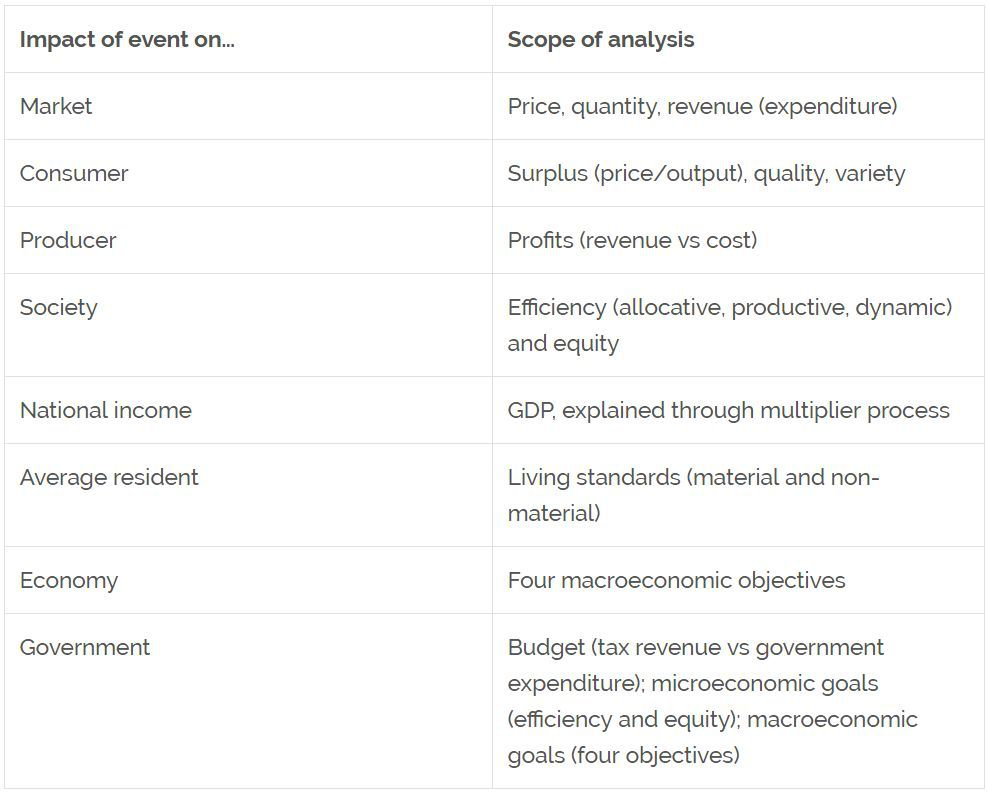A-level 经济考试既考核学科知识,也考察学生的考试能力,今天小编给大家介绍的就是在我们经济考试中一些实用的Tips,帮助大家考试拿高分!
Tip1 事件的影响 纵观整个经济大纲,经常会要求学生评估事件对某一事物的影响。在解决类似问题的时候,可以参考这些分析范围: Tip2 集中精力于经济分析 写经济essay的时候,时间总是紧张的。那么知道内容比例的划分就尤为重要,解释content占多少,简洁的explanation占多少。 Tip3 合理性检查 非常有用,但也经常被忽视的一点。意思就是看一下自己的topic sentences,是否用最直接的方式回答了问题。有时候,我们有些段落可能是用来介绍背景信息但却没有直接回答问题。 举个例子 Explain why the price of fuel tends to be more volatile than other secondary products. Topic Sentence (Version 1): The PED of fuel is affected by a number of factors, including its degree of necessity. Supply of fuel is also affected by a number of different factors. Topic Sentence (Version 2): Demand for fuel is price-inelastic due to its nature as a necessity. Supply may also fluctuate given unstable conditions in the Middle East, a major oil producing region. An unstable supply curve coupled with an inelastic demand curve would lead to wide and frequent fluctuations in price Tip4 记住内容 学习内容很多的概念时(比如说弹性概念、规模经济、进入壁垒),可以参照一个DDEE的原则保证答案的完整性。 Definitions Diagrams Explanation Examples 这样学习概念更方便记忆,因为之前大家的知识是分段的。 比方说遇到“Differentiate between internal and external economies of scale (10m)”这样的问题, 根据DDEE原则就能立马想出essay结构: Definition: Internal EOS are reaped due to growth of the firm while external EOS are independent of firm size and are attributed to growth of the industry. Diagram: Internal EOS is seen diagrammatically as a movement downwards along the long run average cost curve (LRAC) while external EOS manifests as a downward shift of the entire LRAC. Explanation / Examples: Sources of internal EOS include technical, marketing, financial or managerial economies. On the other hand, external EOS takes the form of economies of information, concentration or disintegration. 嗯,就是这样了,考前大家非常值得一看哦!






